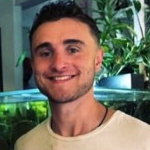A number of Covid-impacted stocks have enjoyed something of a rally in recent weeks as more positive news on vaccines has emerged. However, Lazard Asset Management’s Steve Wreford warns that sticking to larger structural themes could prevent investors from getting caught up in the hype surrounding any particular style.
“Our strategy is around identifying the biggest structural changes of the next decade,” said Wreford (pictured), co-manager of the offshore $88.7m Lazard Global Thematic Focus fund, which launched earlier this year. 
“While there’s a lot of contrarian views on next year, the reality will be a hybrid of continuing structural changes weighed against a return to normal with the vaccine,” Wreford added.
The Lazard Global Thematic Focus fund – which Wreford manages alongside Nicholas Bratt and John King – is a concentrated version of the five FE fundinfo Crown rated Lazard Global Thematic fund.
The process of constructing the fund’s global framework involves talking to over 4,000 company management teams to understand their big structural hurdles.
“When they’re not firefighting pandemics and near-term issues, what they’re really interested in are the big structural decisions during their tenure,” Wreford said.
“You start to identify those after talking to hundreds and thousands of management teams and you end up with a picture of the next decade which is the closest thing to a crystal ball you’re going to find.”
While the fund focuses on fundamental structural change, Wreford said there is still great importance attached to short-term cyclical changes.
“Cyclical change is important as it enables us to have an exit and entry point,” he said. “A structural tailwind with a cyclical headwind is the perfect entry point.
“The scarcest resource in the market is patience,” Wreford added. “The ability to sit there and do nothing – the big money is made by identifying a structural change and staying the course.”
Wreford said while technology has dominated the last 10 years, it will now have to coexist with three other key themes which form the global framework of the fund’s investment approach.
Global framework of the fund

Source: Lazard Asset Management
The four-pronged framework incorporates technology, geopolitical, monetary and sustainability issues – all of which have been increasingly important throughout the year.
“China and the US are engaged in a cold war on who will have the best technology,” he said.
“Monetary policy is a technology issue as it’s incredibly deflationary and polarising in terms of the haves and haves not, plus it can also tackle sustainability issues if capital is allocated in solving those problems.
“The pandemic was a sustainability issue – this year has been a microcosm of what’s to come.”
Other thematic funds market themselves as identifying future trends, but Wreford believes “portfolio of the future” is more accurate when describing the Lazard Global Thematic Focus fund.
“Trends tend to be quite vague,” he said. “A narrative which sounds compelling but when you scratch the surface there’s not any investment returns underneath.”
He explained that 3D printing was one of those trends that couldn’t satisfy their investment criteria.
“Is it an investment theme?” he asked. “Perhaps not. It’s a valuable [and] niche technology, but it’s a very slow mover.”
Attempting to encompass multiple geographic, political and regulatory factors can be challenging in terms of stock selection, but the manager explained it’s a trade-off between companies’ idiosyncrasies.
“The common conception is that smaller companies are the best thematic stocks because they fit a theme well, but the problem with that is it disregards decades of understanding about economies of scale,” said Wreford. “Big companies are powerful, can invest more, have strong customer relations, can diversify revenues, and are much more resilient.”
He explained that, like all the decisions that go into the fund, it’s a trade-off between sacrificing the power of a large company for a pure thematic fit.
“In some cases, a smaller pure play is a better fit, in some cases a large company is better fit despite some idiosyncratic elements – it’s a blend,” he added.
Performance of fund vs sector & benchmark since launch

Source: FE Analytics
Since launch in February, the fund has made a total return of 15.17 per cent compared to a gain of 11.79 per cent for the FO Equity-Ethical peer group and 8.52 per cent for the MSCI ACWI GTR index. The fund has an ongoing charges figure (OCF) of 0.96 per cent






